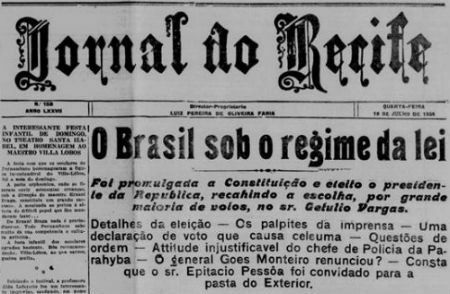The victory of the popular army against the kingdoms of Prussia and Austria in 1792, which had tried to invade France, strengthened the republican political groups, which led to the end of the phase of the Constitutional monarchy of the French Revolution. The Proclamation of the Republic in September 1792 initiated a new phase of the revolution, the one ofNational Convention.
The National Convention had been elected in the National Assembly, functioning as a kind of Executive Power. The establishment of the Republic – famous for its motto of liberty, equality and fraternity – led to the elaboration of a new Constitution, which sought to guarantee greater rights to the lower classes of the population.
A new calendar was created, indicating 1792, the year of proclamation of the Republic, as year I of the revolutionary calendar. It was a way of attacking Christianity and giving more space to rationalism in French social life.
The establishment of the Republic was also a way of trying to solve the problems that existed in French society. Neighboring countries, ruled by former monarchies, intended to fight the Republic for representing a threat to their power, as the population of these countries could be influenced by events in the France. The war on the French government was the way used to stop the republican actions.
Within France there were problems related to the lack of food and rising prices, in addition to not being all sections of the population to agree with the measures established by the Republic. Revolts were taking place in the countryside and in the countryside. In the capital Paris, the revolution tended to become radicalized, with an intense political participation of the sans-culottes, which intended to expand social rights to the poorest.
These pressures resulted in political divisions within the National Assembly, and even within the Convention. The political groups split into three: the Girondin, representatives of the industrial bourgeoisie; the members of flat land, or swamp, allied to the interests of the financial bourgeoisie; and the Mountain, formed by the Jacobins and Condeliers, petty bourgeois who had the support of the sans-culottes. This political division would still give origin of the terms right and left.
The Girondins stayed ahead of the National Convention at first. However, the radicalization of the revolution and the strengthening of the Jacobins led the Republic to take new directions. King Louis XVI was convicted of treason and executed at the guillotine in January 1793.
The Jacobins still managed to form a Public Safety Committee, proposed by Jean-Paul Marat, one of the leaders of the group. Marat was known as the Friend of the People, due to the title of the same name that had his newspaper, indicating his connection with the sans-culottes. Also highlighted as Jacobin leaders: Georges Danton, more moderate, Maximilien Robespierre, Jacques-René Hébert and Louis Saint-Just, with more radical positions within Jacobinism.
In addition to the Public Safety Committee, which would fight counterrevolutionary actions, the Revolutionary Court, who would judge the enemies of the Revolution. Countless people were tried and convicted by the Court, most of them executed using the guillotine. Queen Marie Antoinette and several Girondins lost their heads in a public square.
The radicalization of the Revolution took place when Marat was murdered in his home by a Girondina woman. The popular commotion resulting from the murder of the Friend of the People led the Jacobins to seize power, beginning the period of Horror. The application of revolutionary terror against the enemies of power was the reason the period was so named.
The leadership of the government fell to Robespierre and Saint-Just. The main measures adopted were related to the control of food prices (Law of Maximums), political rights were extended to all men over 21 years, sought to improve public health and education, with the creation of several schools at various levels with the objective of instructing the entire population. population. The Jacobins also intended to limit the right to private property, preventing the concentration of wealth.
These measures displeased the Girondins and the bourgeoisie, who began to oppose Robespierre. The latter, in turn, gradually lost his political support, mainly as a result of their conviction and execution. Hébert and Danton, for example, were guillotined.
Isolated and without popular support, Robespierre did not resist the pressure of the Girondins. He was arrested and executed in July 1794, the 9th of Thermidor, in the revolutionary calendar. It was the beginning of thermidorian reaction, who would chase the sans-culottes and attacking the social achievements of the Convention period. It was the victory of the Girondins and the bourgeoisie. The coup d'état against the Jacobins ended the period of the National Convention, beginning a new phase of the revolution: the Directory.
Take the opportunity to check out our video classes related to the subject:


